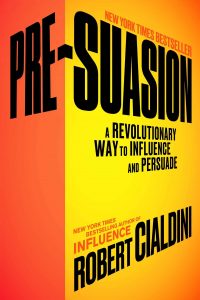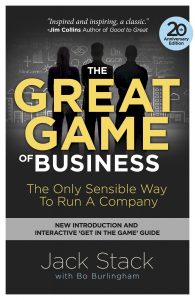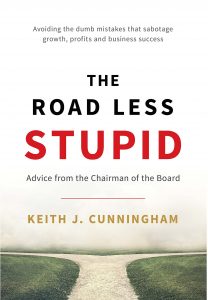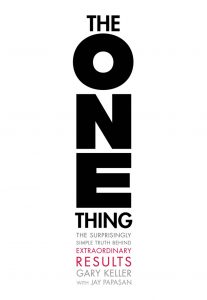In this Episode
- [00:40]Stephan introduces Adam Lean, the founder, and president of The CFO Project.
- [06:54]Adam shares how a business can create cash in three different ways: taking on debt, get investors, and get your business operating.
- [10:02]What business owners should pay attention to in order to avoid revenue loss and improve profit.
- [20:49]Stephan asked Adam what happens in those scenarios when a chunk of a business profit does not go to cash.
- [24:14]Stephan and Adam point out that having a digital business is a fantastic business model.
- [29:50]Adam points out that revenue is a lagging indicator; it tells you what happened in order for you to know what to do to improve revenue.
- [35:46]Stephan shares how the data-driven decision-making phase can affect your business.
- [41:34]How to humanize sending an invoice since people do business with people and not with faceless corporations.
- [48:34]Adam shares a template on what a profit scoreboard looks like and how it works.
- [49:54]Adam shares his recommended resources for the listeners to use to get better at their financial acumen.
Welcome to the show, Adam.
Hey, I’m excited to be here. Thank you for having me.
Thank you for doing this. I’ve heard great things about your podcast and your business. We’re in a mastermind together called JVMM (Joint Venture Mastermind), and I just have you on the show. So thanks for joining.
I’m excited.
This is a problem that I bet a lot of our listeners who have small businesses, maybe even a side hustle, where they’re claiming some of their homes as an office and running some expenses just to have a small side gig. Numbers, figuring out all the different financials, and keeping tabs on all those numbers can be a real struggle for many of us, me included.
I delegate everything I possibly can, including (from the number standpoint) my personal finances. I can’t remember the last time I logged in to my online banking, so I don’t know what account balances I have for my personal accounts or my business accounts.
My bookkeeper tells me that I’m the client of hers that has the most stuff that I delegate to her. I don’t really like it that way because it gives me a headache every time I have to look at these spreadsheets and cash flow projections. I know it’s important, yet it doesn’t spark joy, to use the term from the Marie Kondo tidying up kind of world. What advice would you give me and others who are in a similar boat?
The good news is that you’re not alone. Most business owners don’t want to look at the numbers because it’s not what they’re great at. It’s not what most business owners have gotten to business to do. Most business owners started a business or bought a business because they’re an expert at their craft. Whatever trade or craft they’re in. That’s what they want to do. They’re great at the product or service delivery. They’re great at sales and operations. They’re not so great at the numbers if they don’t want to look at it.
Here’s the thing. It’s totally fine to delegate a lot of accounting and finance. In fact, you probably should delegate your accounting and finance because you want it to be right. The one thing that you can’t delegate—I tell business owners this all the time—is you have to understand your numbers, your core numbers.
The good news is there’s not that many of them. They’re less than 10, 10 numbers that you need to know every single month at the least. Even tracking them daily or weekly would be better. But even monthly, know these ten numbers. And in some cases, it’s less than 10. If you know these numbers and understand them, then you can do the most important thing: you can improve them. If you improve these numbers, the two main things that matter to every business of every size, of any industry, is profit and cash flow. You got to have a profit, and you’ve got to turn as much of that profit into cash that you get to keep.

Robert Kiyosaki wrote Rich Dad Poor Dad. He says, “It doesn’t matter how much you make. It matters how much you keep.” You can make a million dollars in profit but if you’re not keeping it, if it’s all going out the door, or you do not even see that in the form of cash, then what does that matter? The goal of your business should be to create cash, and that’s a number. You have to understand certain numbers, and then you can delegate the rest.
Cash is king.
Absolutely.
And there’s a distinguishing factor here that I didn’t understand until I heard Keith Cunningham spoke about it, that there are three types of cash. There’s O cash (operating cash), financing cash, and investing cash. O cash is king. That’s what will keep you in business. You’ll die fast of a business heart attack if you run out of cash. That was very enlightening to me, and I do ask my bookkeeper to give me a heads-up if cash is going to look tight at all. The business is quite profitable, so I don’t normally have to pay that close attention.
Peter Drucker is famous for saying, “What gets measured gets managed,” so how am I supposed to manage something I’m not even tracking?
I’m glad you brought that up because that’s the key. You have to understand your numbers. You also have to know what to do about them to improve the cash flow and profit. I want to touch on that, but let me first quickly touch on what you just said. There are three types of cash. If you think about it, a business can create cash in three different ways. You mentioned the names, but one way to create cash is by taking on debt.
Let’s say your credit card has a $5000 balance. You have access to $5000 in cash. You’ve created, in a sense, $5000 in cash. The problem is you owe that money back, it’s not yours to keep.
Every business's number one goal should be to create cash. As an entrepreneur, you have to understand certain numbers first before you can delegate the rest. Share on XThe second way to create cash is to get investors. You can get your in-laws to invest in your business at $50,000. That’s great. You have $50,000 access to cash, but you have to give away a piece of your business, and you now have somebody else helping you manage and tell you what to do with your business because they’re an owner in a sense. You have to literally give away a piece of your business.
The third way to create cash, as you mentioned, you called it operating. It is operating, but how do you get cash from operations? You make a profit. Obviously, you have to have more sales, more gross profit, more net profit. All of that turns into a profit. But then, there’s another hurdle that a lot of people don’t really talk about. It’s that you have to turn that profit into cash.
Here’s an example. I met with a client last Tuesday, owns a large construction company. In the last month, they did a little over $1 million in revenue. Sounds great. Their net profit for January was around $300,000. Phenomenal, right? They had a cash flow loss of about $100,000. So, not only did they not turn that $300,000 into cash, they spent more than that on the business. They have made a $300,000 profit, but their cash went down by $400,000 during the month.
There’s a variety of reasons why in this business, but the fact for me is it doesn’t matter that they did that much in profit. It matters how much you get to keep in the bank.
So speaking of facts, cash is a fact whereas profit is a theory, right?
It’s a good way to put it.
I think that one is from Keith Cunningham as well. It’s so important to have enough cash to cover your expenses because if you don’t, you have to go to your staff and say, “I don’t have enough money to pay the payroll this week.” That is the beginning of the end because they lose faith in you; they start looking for other jobs. The best people tend to leave first. It gets ugly.
I completely agree. It’s not enough to make the cash. You’ve got to make a profit and turn that into cash, but the thing that trips up a lot of business owners is they don’t know what their next steps are. They don’t have a plan for doing that. They want to focus on the operations of the business. They want to sell, or they want to focus on their craft.
They might get certain reports from their bookkeeper/accountant, the income statement, or the balance sheet, but they have no idea what to do with it. Because they have no idea what to do with it, they don’t know what next steps they have to take to turn the profit into cash and to keep that cash.
That’s why I alluded to you a few minutes ago that there are certain numbers, that if the business owner paid attention to these numbers, then they wouldn’t have to worry about the P&L or the income statement, they won’t have to worry about the balance sheet. They’ll be able to just focus on these 7–10 numbers, and then based on the performance of these 7–10 numbers, you then know exactly what to do to improve the profit and cash flow of the business.
All right. So we got to know what those 7–10 numbers are. What are they?
Of course, these may vary based on your specific industry, but by and large, most small businesses have the same numbers. Before we dive into the seven numbers, I want to explain what to do with these seven numbers from the 50,000-foot view. Essentially, for each of these seven numbers, you’ve got to track where you were last year for these seven numbers, and then you’ve got to track a budget or what I call a target for each of these seven numbers. Then, every single month you must track where you are for each of these seven numbers, and you got to do that monthly.

Okay. At least monthly.
At least monthly, yes. Ideally, even earlier than that, maybe weekly or daily. The problem with that is a lot of these numbers depend on your book’s being done, and most businesses’ books are done at least every month. Most bookkeepers don’t do weekly bookkeeping.
Now, for each of these seven numbers, because you set targets, you’ll know if that number is causing you to not hit your profit or cash goals. So, everything going on in your business, you’ll know, based on these seven numbers, what’s working and what’s not working. Only until you know what’s working and what’s not working, then you’ll be able to know what specific action steps to take. Makes sense?
It makes total sense.
Again, some of these may vary based on your industry. The first is leads. To make a profit you have to make sales. To get sales, you need leads or potential clients. If you’re an eCommerce store, a lead could be a visitor to the website. If it’s a traditional brick-and-mortar business, it could be phone calls coming in or people visiting the store. You have to have opportunities to do business. You need to track leads.
By the way, for each of these numbers, I like to track them monthly. If it’s March, how many leads did you get last March? What is your goal for the number of leads you want to get this month, for this March? Then, once March is over, track what did you do.
By the way, if you don’t have these numbers for last year, then don’t worry about it. Just start with setting a target. The reason why I like to find out what you did last year is that it gives you a benchmark for setting more accurate targets for this year. So leads, number one.
The second is the percentage of leads that you turn into an actual paying client. In the online world, that’s conversion, right? That’s the same with the offline world, too. How many leads can you turn? You have 100 leads, you own a heating and air business, and you get 75 jobs from those 100 leads, then you have a 75% conversion rate.
The third thing to measure is the percentage of past customers that buy again. This is also known as your retention rate. How many of your past customers can you retain to come back? If you own a marketing agency, for instance, and you had 30 clients last month, what percent of those clients can you get to stay this month? So the retention rate.
Also, let’s use our heating and air business as an example as well. Let’s say that last year you started with 500 customers. You spent the time and money getting those 500 customers last year, why not get them to come back and buy again? So what percent of those 500 customers that bought last year are coming back this year? That’s your retention rate.
All of those three things add up to a number of sales transactions. Let’s say, you want to get 100 sales this month, 100 orders this month. How do you do that? Those three things: get more leads, turn those leads into paying customers at a higher rate, and then get more of your past customers to buy again. Those three things will help you get more orders, more jobs, or however you define a sales transaction.
We have orders- we’ve started measuring the three things needed to get orders. The fourth thing to measure is the average dollar value of a sales transaction. How much is the average job, average order, or average sales transaction worth? If you have 100 orders this month and each order is $10, then that means your revenue is $1000. Orders x average order value = your revenue. To improve revenue, we now have four things to improve: leads, conversion rate, retention rate, and average order value.
Most people like to set targets for revenue or budget for revenue, but they have no idea how to influence the revenue next month. Those are four numbers to influence revenue. If you set targets for each one of those four, you know why your revenue is off-target.
To make a profit, you have to make sales. To close deals, you need leads or potential clients. Share on XMost people say, “I set a target for revenue for $100,000 but only did $80,000 of revenue this month, I have no idea why.” Well, are you not getting enough leads? Are you not turning them into clients at a higher rate? Are you not retaining past customers? Or is your average order value not where it needs to be?
Four different things require different skill sets. You may not have a leads problem. You may have the fact that you’re not converting leads into a customer at a higher rate. But you don’t know until you start tracking these things. That’s four.
Once you make a sale, the fifth is keeping as much of that sale as possible. That is in the form of profit, also known as gross profit. If you own a pizza restaurant, you sell a pizza for $10, that’s one sale at $10, you want to keep as much of that $10 as possible. That’s your gross profit. $10 minus all the direct cost to make the pizza, say that was $3, all the direct cost for the ingredients and all that, that means you made a $7 gross profit.
That’s subtracting out the cost of goods sold, but not all the overhead.
Usually, it depends on the business, but in most cases, you want to subtract out the direct cost. The key to knowing if something is direct or not is if you didn’t make any sales that month, you wouldn’t have any cost.
So in other words, if you have to pay that employee to be there, regardless of how many pizzas you made, it’s probably not a direct cost. But if you didn’t use that dough because you didn’t make any sales, the dough and the ingredients would be a direct cost. Of course, it varies depending on the industry. Some businesses we’ve worked with include labor indirect cost because there’s such a large part of the sale.
Or if they’re contracting everything out.
That’s right. This is the thing about accounting and finance. A lot of it is an art, not really a science. As long as you stick with one method and just use that method consistently, it almost doesn’t matter where it goes. At the end of the day, what’s most important is for you to understand your numbers.
The fifth number is the gross profit percentage. This is a percentage of sales. In our pizza example, they make $7, that’s 70% gross profit. To improve the profit of your business, you want to get that 70% as high as possible.
The sixth number is net profit. So you take your sales minus your cost of sales because it’s your gross profit, then you have to subtract out all the overhead to run the business, like insurance, rent, marketing, things like that. It’s just this overhead. Of course, you want to get that number as low as possible, which gives you your net profit. So that’s number six.
You want to get your overhead as low as possible so that your net profit is as high as possible.
High as possible, that’s right. Exactly.
And is this also a percentage?
I like to measure net profit as a dollar amount and a percentage amount. A dollar amount because you can’t take percentages to the bank. You need to know how much you’re making in terms of net profit. I like to measure a percentage. That way, you can benchmark against yourself. You can measure yourself against last month and last year. You can also measure yourself against other people in your industry.
Let’s say you own an online store, and your industry average is 2.5% net profit, and you’re making 5% net profit, then you’re doing well above the industry average, regardless of the dollar amount.

So, those are two different numbers then? Or do you just count them as one of the seven?
I count them as one of the seven, just measure it as a percentage and as a dollar amount. So that’s number six.
The seventh number is the percentage of profit that you turn into cash, and it’s just a percentage. If you made $10,000 on net profit and you turn 100% of that $10,000 into cash in the bank that you get to keep, that you don’t owe anybody else, it’s yours.
Including the taxman?
Yes. You are paying the tax, paying everything needed to operate the business. That percentage, that’s the seventh number. You want to get that, of course, as high as possible.
Let’s say, for example, you did $10,000 in net profit, and you only added $5000 to the bank. That means you turned 50% of your profit into cash, which is not good. You want to get it as much as close to 100% as possible. So the question is, why did you only get 50%?
Yeah, where did that money go?
Now, you know that’s the problem. If you’re making plenty of profit, but you’re not saving enough on the bank, then that’s the problem. You now know, you’ve identified that that is a problem because it’s below your target of 100%.
So what happens in those kinds of scenarios that cause a chunk of the profit to not go into cash?
There are two main culprits, I’ll add a bonus number three, but the first main culprit is what’s called accounts receivable. This is the amount of money that clients owe you. For instance, let’s say you own a plumbing business, and you made $100,000 in sales last month. You made $100,000 in sales, and after all your expenses, you netted $20,000. Theoretically, you think you would have $20,000 added to your bank account. What if every single one of those $100,000 clients did not pay you that month? You sent them an invoice, they all pay in 30 days or so?
So during the month, you’ve made $100,000 in sales. You kept $20,000 in profit, so you have a $20,000 profit. But you have accounts receivable. People owe you $100,000. Look what happened here. You spent $80,000 in expenses out of your pocket to pay your labor, rent, marketing expenses, and insurance. So you spent out the door $80,000 plus you have $100,000 that is owed to you that you don’t have. So now, you’re upside down in cash. You spent money, and you still haven’t even collected the money. This is why a lot of people say they’re making money, but they do not see it in their bank account.
What if they’re a bunch of deadbeats who never paid, not just paid late, but not pay at all?
That’s even a bigger problem. If that happens consistently, that means you’re doing a couple of things, or you’re not doing a couple of things. You’re not keeping track of who owes you money, and you’re not going after the right type of people that pays on time. So, in other words, if you have a client that has a history of paying late, or worse, not paying you at all, then you have to know that and then never sell to them again. You have to keep track of your accounts receivable.
If you use QuickBooks, there’s a report called The Accounts Receivable or AR Aging Report. I recommend it to you that the business owners run that every week. This is assuming that you have accounts receivable. If you’re a retailer, you’re probably not going to have accounts receivable. If you’re a service-based business, you probably will if you invoice clients. So, accounts receivable is one of the largest culprits of why cash flow is tight.
Another culprit is inventory. If you’re an eCommerce, retailer, restaurant, or you sell inventory, you have to buy. You have to spend money to get products on your shelves to resell it. You’re spending money before the customer pays you, in a sense.
Four things to improve to gain revenue: leads, conversion rate, retention rate, and average order value. Share on XLet’s say you spend $100,000 to stock your shelves or stock your warehouse. That’s $100,000 that’s gone from your bank account, and it’s now tied up on a shelf somewhere. So you go in your warehouse and look at shelves and just picture piles of money there because that’s literally what it is. It’s money that’s on a shelf, not money in your bank account. Now, you have to have inventory. You have to spend this money to buy, to make revenue, make sales.
Unless you’re a digital goods kind of business or service business.
Which is a fantastic business model if you can make it work. Or a dropshipping type business where you get paid by your customer before you have to spend it with your supplier. Of course, there are pros and cons to everything.
If you’re consistently making bad purchasing decisions, then that means you’re going to have so much inventory that’s not worth anything on your shelves, that’s not in your bank account. That does two things. One, it’s money that’s not in your bank account that you can use to do other things with marketing or hiring more people to help. Second, that means you’re not selling through that inventory, turning it into cash, and then going out and using that cash to buy more inventory.
That’s why they call it an inventory turnover. You want as high of an inventory turnover as possible. You want to sell your product in your warehouse or on your shelf as much as possible. You want a widget to come in, sit on your shelf for, let’s say a day. You sell that widget, and you get cash because you sell that product, and you’re making a profit on it. So there you have the cash to go back and buy two widgets that you can turn to sell, and then sell those two widgets. If you keep doing that, then you’ll have a high inventory turnover.
The problem if a business is experiencing cash problems, and they have a lot of inventory, it probably is because they have a low turnover ratio and a low turnover rate. Their budget inventory that’s just not selling, it’s just sitting, and it’s not on your bank account.
And similarly, with these accounts receivables that are sitting, collecting dust, nobody is paying those, you don’t have a pit bull on your team who’s harassing your clients like,
“Where’s my money?”
I’ve told my bookkeeper this. She has to be a pit bull. Treat my business as if it’s her business. If money is not coming in, just imagine if that’s happening to her. That sunk in. Still, sometimes we get issues where she lets things go a little too long. I got really burned out last year. A client, a very large one, went out of business, and by the time they did, they were closed down by the SEC.
My goodness.
Horrible. All these wonderful people who are very skilled and good folks out of a job.
It’s frustrating.
It’s ugly. Let’s just say it was a six-figure loss to me because my bookkeeper lets this go so many months in arrears because they had such a stellar payment history in the past for two years. I’m never getting that money, a company that’s been liquidated, and there’s nothing left. It’s pretty horrible when that happens. If it were her business, she would not let that happen. It’s frustrating and painful.
It is. I sense your frustration. I’ve had similar issues with myself, and I’ve had clients that have experienced similar problems. Here’s the problem, though. Most bookkeepers, whether you employ them, or they’re an outsourced bookkeeper or accountant. They’re getting paid to record what happened, that’s it. They’re not getting paid to help you strategize and help you grow your business.
That’s why I go back to what I said in the beginning. The business owner has got to understand just a few key numbers. That way, if they understand those few key numbers, then they could take steps to say, “Hey, this number is off compared to my target. Bookkeeper, tell me why,” or, “Marketing Manager, tell me why,” or, “Operations person, tell me why?”

It all starts with the business owner recognizing the problem, and the business owner is never going to recognize the problem if they’re relying on—I’m an accountant, I could say these things—complicated financial statements, the P&L, the balance sheets, statement and cash flows. To the average business owner, they’re confusing, and some things are confusing, they’re just not going to look at them.
According to the small business administration, half of all businesses never see their 5th birthday, one out of two, I mean that’s crazy to think about it. Still, I guarantee you, all of those businesses even the one that went out of business, had bookkeepers and accountants. The key is the business owner understanding the key numbers.
You said there were seven that are the key ones, but they’re up to 10. What are those other three that sometimes are part of the business?
Well, it depends on the business. By the way, anybody that’s listening, I can give them a copy of these seven, too. We can talk about how to do that later on in the episode. It is so important for business owners to understand the key numbers. Remember, earlier when I said that to get revenue, you’ve got improved orders and you got improved average order value?
Well, revenue is what’s called a lagging indicator. It tells you what happened. You need to know what to do to improve revenue. You need to know the metrics to improve revenue. The seven things that I gave you, the seven numbers, are leading indicators. These are things that lead to a number. I call them drivers, the seven drivers of numbers. There are other numbers that you need to know, but they’re more lagging indicators. They’re not going to help you as much to figure out how to improve profit and cash flow in the future.
It’s like driving your car. It’s very useful to have the rearview mirror, but you can’t drive the car just using the rearview mirror.
Absolutely. That’s a great example. These seven numbers are the numbers that will tell you how well you’re going to do and how well you’re going to perform profit-wise next month.
Got it, okay. I thought of the metric to add to that list just as you were talking. For me, for my business, I have clients that will engage me on a one-off project sometimes, like SEO audit. I need to keep those clients warm, let them know I’m thinking about them, not just checking in but adding value when I do. Some of those folks reactivate, and that’s different from retention.
If I have an ongoing monthly retainer-based engagement with a client, and they’re just month to month, they’re happy and are continuing for months or years even. That’s retention. That’s the third metric that you said. But then I could take a past customer client from three years ago and reactivate them by keeping them in the loop on algorithm updates, just giving them a heads up to certain things that I happened to see, and just adding value. I would want to keep those two metrics separate.
There are three types of cash: operating cash, financing cash, and investing cash. Share on XYeah. That’s a very good point. Most businesses probably have one or the other. They have a retention business model, or they have a business model, or they’re not, where they don’t have recurring clients, but in many cases, you can do both. That’s another layer of numbers to have. You could track the percentage of past clients who come back, and you can track the retention rate of re-occurring clients. If you have both, then track both. That’s a very good point.
There’s another metric that I’ve been tracking that is very helpful for me determining which conferences to speak at, and which masterminds to be a part of like at the moment. I’m in five different masterminds, there’s a lot.
That’s not even counting JVMM because JVMM is virtual. We don’t have to travel and take days out of our schedule to meet, but there are five other ones where I have to do some travel, and that’s potentially very expensive, some of these masterminds are at $25,000 a year. They’re well worth it because my bookkeeper tracks all the different revenues, the sources, which marketing weapons drove that revenue. We can see that, “Oh my goodness, this particular conference that I’ve been speaking at for five years in a row hasn’t driven more than a few percent of my total revenue. Why am I still speaking at that show?”
For all of our clients, we track your marketing sources, then we track how many leads, and how many actual jobs or sales transactions you get from each of those, so you can track the return on investment. It’s great that you do that. It’s very important. That all feeds into one of the first main drivers, which is leads. Are you getting leads from those marketing sources, and are those leads turning into actual jobs? That’s super important.
Yeah, one that I made with this—by the way, this idea I got from Tom Kelly, who’s one of my coaches; he’s great. The distinction I wanted to make was that if an event, conference, mastermind, seminar or whatever led to me meeting a joint venture partner or a valuable referral source, I’m not going to associate the referral source in this marketing weapon spreadsheet. I’m going to go back to which event caused me to meet this person so that I keep spending money going to that event because I’m looking for that kind of a partner.
Absolutely. I think if more businesses did things like that, they would see more profit and more cash flow.
It’s surprising that I didn’t do this for as long as I did. I’ve been doing this now for several years, like three years. I can’t believe that for all those previous years, I didn’t do this.
You could see the benefit of just tracking, even if you’re not tracking everything. In many cases, tracking smaller amounts of things leads to better results because you’re not overwhelmed with data. You’re just tracking the most important things that matter. That’s the power of tracking because that helps you understand. You won’t make corrective decisions or decisions that will help you better your business unless you understand the data. These seven numbers, these key numbers are a great way for you to understand your business.
There’s a phrase called data-driven decision-making. If it’s a number that’s not going to help you make a decision, what do you do with that number? Why are you wasting your mental horsepower and your attention?
It’s a vanity number. Like who cares? I completely agree with you.
If I wanted to massively increase my revenue and just white label somebody else’s services, but their services were so expensive, that I made only a tiny bit of profit on it, on the very surface level, this vanity metric or revenue would look good. I’d be doubling, tripling, quadrupling my revenue, whatever the number is, but the profit is not there to justify doing it. It’s not viable.
That’s right. That’s why you know number six and seven of the numbers are profit and cash flow. You have to make a profit, and you have to turn that profit into cash. Most people focus on revenue because it sounds better, “I’m a million-dollar business. I have a six-figure business or seven-figure business.” Who cares if you’re only making $20,000 take home? Who cares? The goal of your business should be to make as much money or cash for you, the owner, that you get to keep. What you do with that cash is up to you. You can give it all away to charity. It doesn’t matter. The point is the health of a business is measured by how much cash it creates.
And that’s a side effect of value creation. If you’re not creating value, it’s not a viable business, even if you created cash flow.
Absolutely, I agree. Some people have pushed back and say, “Well, I don’t care about making a profit as long as my employees are happy and whatnot,” or “I own a nonprofit, and we don’t make a profit.” No, you’re confusing things. If you’re not making a profit and you don’t have cash flow, you don’t have a business. Therefore, your employees lose their jobs. If you want to make your employees happy, then why not give them a business that’s going to be around for another 5 or 10 years, there’s growth potential, there are earnings potential, and maybe they can even invest in the company. Who knows?
It doesn't matter how much profit you earn. What matters is how much you get to keep in the bank. Share on XThe people that say, “Well, I own a nonprofit.” Well, nonprofit is just a misnomer. They have to make a profit, they have to make more than they spend because what’s leftover, gets to go back into their mission, the delivery of your mission if you’re a nonprofit. The more money you make means you could do more good for people
At the end of the day, whether you’re a nonprofit or not, you have to make a profit. In the nonprofit world, it’s called a surplus. You have to turn that into cash that you get to keep. If you get $100,000 worth of donors that they say they’ll donate but never do, it doesn’t matter that you made $100,000. You have to turn that into cash.
With a nonprofit, many of these are putting their financials, their tax returns online, so you can just see what all the numbers are.
I just happened to be looking yesterday. I was curious about what Code for America was up to. I was looking at their tax returns just to see how much money they get in donations. That’s a lot. They get a lot of money, many millions of dollars in donations. It’s very impressive, and they’re spending most of it, but not all of it. They do have some surplus so that they have money for a rainy day. It makes total sense.
One thing about AR (accounts receivable) that is going to make a big difference for your business. If you reduce the amount of time when that invoice, your invoices sitting collecting dust and you go from a net $30,000 to $45,000 on average to a net $5000 to $15,000, that’s more cash for you and fewer requirements to get a line of credit from your bank. You may or may not even need a line of credit with your bank, just by getting these turnaround times of payment lower.
One technique for this that is super clever, I learned from the king of influence, Dr. Robert Cialdini. This was at the Genius Network Annual Event. He gave a presentation. I’ll just give us a little bit of a highlight about it.
Somebody shared this data with him that they were sending postcards with their invoices. It reduced the time of turnaround for the payment. This lady started personalizing the postcard, not just writing a note like, “Thank you,” and, “It’s great having you as a client or customer,” but she had this one client who was a notoriously late payer, like six months crazy long time. She looked up his interests, and he was interested in art. She started sending art postcards. The turnaround time drastically shifted. It would be like less than a month’s turnaround time.
She did more digging, and she found out that he was specifically interested in modern art. She would change the postcard to modern art postcards, and she started getting paid right away, as soon as the invoice was received. Isn’t that clever? There’s a lot more to unpack about this, but I just want to share this idea of standing out from all the other invoices that the client is receiving and making it personal to them, showing that you care. It doesn’t have to be a physical thing like a postcard. It can be a Bonjoro little video message that you email to the client along with the invoice. That’s so smart.
I love that story.

Dr. Cialdini, the author of The Influence and Pre-Suasion, he’s incredible. I’ve had him on the show.
I wanted to check him out. In that story that you told, it sounds like two things are going on. One, the business owner was savvy enough to know who owes them money. I can’t tell you how many clients, how many business owners don’t know who owes them money, or for how long.
They knew who were the biggest accounts, who were the most notoriously late payers of those big accounts, then personalize a strategy around collecting from that person.
The second thing is making it personal. Statement or invoice in the mail, there’s no relationship, there’s no human interaction. But I guarantee you—not that people should do this—if that business owner got in their car and drove to that person’s office and sat down with them, it will become real and personal because there’s a human behind this. They made it real, and they humanized this invoice. This is all about relationships.

It is. Business with people, not with faceless corporations. If you show that human face, you’re going to get a better result.
We have a handful of minutes left. I want to make sure that we cover the plan. Once somebody is tracking these numbers, seeing that they have a problem with lead flow, they have a problem with conversion, with retention, with a small AOV, or whatever the issue is, what do they do? How do they formulate a plan? And how do they start embarking on these next steps to execute on the plan?
That’s a great question. The exercise that we talked about- tracking your seven numbers, keeping track of targets or goals for each of the seven numbers. Then if you update the actuals every single month, you’ll quickly be able to tell of the seven numbers, which ones are not working and which ones are working. You may be fine. For our clients, we create a scoreboard for them that includes these seven numbers, and it’s red, green, or yellow.
If it’s green, that means you’re ahead of your track, your target. If it is yellow, that means you’re a little bit behind. If it’s red, that means you’re very behind. You may have green in everything except for, let’s say gross profit; that may be in red. The business owner immediately knows, “All right, of everything I could be doing, the gross profit is the one thing that is preventing me from hitting my profit target the most. Let’s focus on gross profit.” So now, you zeroed in, you put the spotlight on gross profit. Now that you know what the problem is, now you could take steps to fix the problem.
You can dig deeper and figure out why gross profit was off for that month. You’re now focused on gross profit rather than focused on leads, average order value, or inventory. Those are all fine because you’re tracking them, and you know they’re fine.
I like this approach of having a scoreboard with the red, green, and yellow. It reminds me of Mike Moran. He’s an SEO who used to work at IBM. It’s a big company. You deal with a lot of different department and division heads, and so forth. He was in charge of SEO, and he would show how the different departments and divisions were doing in a monthly meeting. He used that scoreboard with the red, green, and yellow. He called it management by embarrassment.
Eventually, a division head would say, “I’m sick being in the red box in every meeting that Mike Moran does, just fix it.” They’d just be sick of being called out or being highlighted with the red boxes because they weren’t up to snuff in comparison to all the other divisions. That was pretty cool. That’s just for the SEO kinds of metrics, that wasn’t the profitability, AOVs, or any of that sort of stuff.
There’s a book by Alan Mulally. He used to be the CEO of Ford. He did something very similar to what you just described. He had all his direct reports, the key leaders of Ford. He gave them metrics that they were responsible for, and then every month or every time they met, he gave them a score of red, green, or yellow.
What was the name of that book?

Honestly, I can’t remember the name. I think it’s called American Icon, I think. It’s written by Alan Mulally. I’m looking at my bookshelf, but I can’t find it. He was the CEO of Ford when all the car manufacturers were going through that crisis in the 2000s.
The book is called American Icon: Alan Mulally and the Fight to Save Ford Motor Company by Bryce Hoffman.
Awesome.
Fantastic read. The reason why I came up with this is, I’ve been working with business owners for a while now, but then about 3-4 years ago, I could not figure out how to translate to a client how well they’re doing. We would track these numbers, but it just wasn’t clicking. Something wasn’t clicking. I happen to go on a cruise, and this cruise ship allowed you to view the bridge. There’s a window to the bridge. The bridge is where the captain and all the other officers sit to essentially drive the ship and manage the ship.
I went up to the bridge, and I looked, and the captain literally had just three computer monitors in front of him. That was it. Each of the three monitors had just red, green, or yellow squares. Literally, that’s it. I asked somebody about it, and they said, “That controls everything from the propulsion system to the air conditioning in the cruise ship, to the electrical, to the toilet system,” literally everything. If something was off, whoever was in charge of the ship at the time could quickly see what was going right and what was going wrong.
What was going wrong, they’d be able to dive in deeper and figure that out, and then the light bulb went off. That’s what we need for a business owner to quickly see what’s going right and what’s going wrong, and then they’ll be able to take steps to fix it. That’s why I came up with the scoreboard.
That’s genius. That’s really smart. Do you have a template or something that can give the listeners an idea of what this looks like and how it works?
If you go to thecfoproject.com/video, it literally is called How It Works. It’s a 20-minute video. I’ll show you the scoreboard, and I’ll give you all the numbers that you need to track and get the process. You create the scoreboard on an excel spreadsheet, on a piece of paper, on a whiteboard. I would get started today tracking these things. So, thecfoproject.com/video.
Okay. This is awesome. This is very straightforward, not overwhelming. The next action for our listeners to take is to go watch that video and create their own version of the scoreboard. Whether it’s on a whiteboard, a flip chart, an excel spreadsheet, Google sheet, whatever but to start tracking these things and put in the red, yellow, and green in to see if you’re just very quickly visually doing a good job or not. I love it.
We got to improve profit and cash flow. To do that, you got to understand your numbers, and this is a simple way to understand your numbers.

Awesome. We are almost out of time. If you could recommend any additional resources that are some of your favorites- the American Icon book is a great example. One for me is The Great Game of Business by Jack Stack, which is an open-book for management. I love that. The Millionaire Next Door, I love that book because that’s all about not trying to show off and keep up with the Joneses, but just put that money where it’s going to multiply. What are some of your favorite resources?
There are several that I really like. There’s a concept that I use with my clients called Objectives and Key Results (OKRs). It sounds complicated, but it’s not. It’s fantastic. Google uses it, a couple of other large companies, and thousands of smaller companies. There’s a book called Measure What Matters by John Doerr that explains this concept. Fantastic. He sits on the board of Google. I would highly recommend that.
If there’s anybody, any business owner that just wants to get better at their financial acumen—not everybody does, I’m not saying you need to, as long as you understand the seven numbers. If you do want to go deep, there’s a book I recommend called Financial Intelligence for Entrepreneurs by Karen Berman. That is very good as well. I graduated with an accounting degree. I read tons of finance and accounting books, but this is the simplest explanation of financials that I’ve come across.

I’ll also throw in another book since I mentioned Keith Cunningham a couple of times in the interview. He’s got a book called The Road Less Stupid. He’s a funny guy and so smart. I highly recommend that book, too.
That’s funny. Actually, I just started reading it two weeks ago. I’m reading four books right now, so I haven’t finished it yet.
I do that too. I’m listening to four right now and reading another one. I’m a quick starter like a Kobe quick starter, number nine for a quick start. I am doing so many different things at once.
I feel your pain.
Yeah, and to counteract that I’m also reading or listening to the book, The One Thing, which is…
I read that last year by Gary Keller.

That’s a good book. I really like that. That is very similar to Essentialism by Greg Mckeown.
I haven’t read that one yet, but that one is on my list.
Again, thecfoproject.com/video to watch the video, and your main website is thecfoproject.com. If they wanted to learn more about you and potentially work with you, you take on clients to just basically be their outsourced CFO, right?
Sort of, we make it super simple. We just have a 4-step process. A CFO will meet with the business owner once a month and show them what’s going right, what’s going wrong, and what to do about it. That way, the business owner can focus on what they do best, and then they have their CFO (Chief Financial Officer) looking at their business every single month to show them what’s going right and what’s going wrong. That way, the business owner could focus on just a few things needed to improve the progress of their business.
We create a custom scoreboard for you. We analyze it every single month, analyze your financial scoreboard and everything, and then we get on a call, we go through the scoreboard, and we show you, here’s what’s going right, here’s what’s going wrong, and here’s your action plan. We give them a custom action plan to do. It is usually never more than three things. That way, the business owner stays on track to hit their profit. That’s our mission. Our goal is to help them hit their profit target.
And cash target.
Yeah, and cash target. You’re right, and it works. So, thecfoproject.com.
Right, and you have a podcast, too.
I do. It’s P is for Profit. Feel free to check that out. Our goal is to make business and financial concepts seem simple and easy to understand.
That’s a cute name. I like it. All right, very good, thank you so much, Adam. Listeners, now you’ve got some very tangible straightforward things that you can work on to create that scoreboard, to take all this complexity, and boil it down to just seven or so simple numbers that you track on a monthly basis, or better. We’ll catch you on the next episode of Get Yourself Optimized. I’m your host, Stephan Spencer, signing off.











